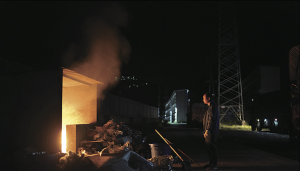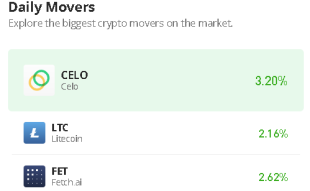Join Our Telegram channel to stay up to date on breaking news coverage
Global bitcoin fever swept millions of people between 2020 and the middle of 2022. Converts to blockchain and Web3 reached every nook of the cryptocurrency ecosystem, from the cold wastes of Kazakhstan to underground clubs in Jakarta — including locations where many individuals don’t have, nor desire, a bank account. By the week, more and more people were mining in Lebanon, trading in Indonesia, building infrastructure in Singapore, and playing video games for money in the Philippines.
However, the world’s fixation with cryptocurrencies has soured in the year since bitcoin’s price reached an all-time high of $68,789 per unit. Memecoins fell and exchanges became unstable as a result of the unraveling of the Luna coin in May. As a result of tightening rules that followed, the once-reliable exchange FTX collapsed at the end of the year.
Tens of traders, miners, and investors from Almaty to Singapore who were thrilled to be a part of the cryptocurrency wealth bubble a year ago were interviewed by Rest of World in Asia. In their second conversation in December, they now voice regret and perplexity, yet there are glimmers of hope from some who still harbor trade as a fantasy.
Crypto miners dominated Kazakhstan’s outlying regions in late 2021. “Little hamsters”, as smallholders they are known in the countryside, linked to an electrical source in their backyards. Big players blasted smoke across unbroken, frigid horizons from factories filled with CPUs that produced cryptocurrencies.
These days, a broken power system and falling cryptocurrency prices have struck miners in tandem. Due to severe shortages, the Kazakhstani government disconnected miners from local power in January and later rationed them on pricey, imported power from Russia.
According to Din-mukhammed Matkenov, the creator of large-scale miner BTC KZ,
Almost every legitimate miner has scaled back their operations. Russia doesn’t always supply dependable electricity supplies.
BTC KZ had been considering expanding to Latin America or Russia in February. It never took place. Instead, workers are currently disassembling pieces of the massive enterprise so they may be moved or sold for parts. Local publications have published accounts of other miners doing similarly to BTC KZ, thus he is not alone in this.
The miners who are still working are doing so at a loss in an effort to hang on until cryptocurrency prices increase. According to Matkenov, mining farms can only now operate on weekdays between midnight and 9 a.m. during off-peak hours, and all day on weekends. They pay substantially more for Russian electricity than for energy produced close to home.
Backyard miner Marat recently turned off his mining equipment to concentrate on real estate investment. If he ever decides to start mining again, he informed Rest of World that he will wait until Ethereum prices reach $1,900. Marat, who asked for anonymity because he was illegally stealing power, stated, “If not, we will sell our graphics processing units to gamers. At these costs, it isn’t worth it.”
The miners in Kazakhstan have an uneasy feeling that the government is trying to squeeze them for money. An additional value-added tax on imported mining equipment as well as corporate income taxes on the value of the cryptocurrency mined are all now in place, with the tax on electricity consumption anticipated to grow tenfold in January 2023. The lower house of the parliament last month approved brand-new legislation that would require businesses to pay for a license and purchase electricity at centralized auctions.
Matkenov lamented,
The Kazakh president encouraged investors to come to Kazakhstan, and it has all played out well on paper. But the truth is otherwise.
In Indonesia, reality has hit, too. A year ago, it had never been easier for Indonesians to join the crypto wave: With as little as 75 cents and a smartphone, anyone could jump on a trading app. Between 2020 and 2021, the value of crypto changing hands in Indonesia shot up more than 10 times to around $50 billion.
I don’t know if it was all just a scam or a legit investment.
In November 2021, Rest of World spoke with Jakarta-based indie musician Ananda Badudu, who was, at the time, a full-fledged, NFT-minting enthusiast on crypto-Twitter. Though he’d already lost money, he said he was certain the banking system revolution was just beginning.
But by December 2022, Badudu’s idealism had crashed to earth. His investments vaporized after the collapse of the exchange Celsius, itself undercut by the stunning failure of Do Kwon’s Luna coin.
“At this point, I don’t know if it was all just a scam or a legit investment,” Badudu said, confused.
He still has money in the Binance exchange, but doesn’t monitor it at all out of disillusionment. He declined to reveal how much he had lost.
“So many questionable crypto companies popped up, but there’s no laws or regulations to control this,” he said. “I’m not saying that investing in [mainstream] coins like Ethereum or Bitcoin is bad … We know the risks. But looking at how more and more crypto were wiped out of existence, this whole investment is really full of predators.”
Once-active cryptocurrency channels on Telegram, used by traders in Indonesia, are now choked with spam. Antonny Teo, founder of the Kriptonesian channel — among Indonesia’s largest such communities — said d he’s lost some 50% of his followers since peak membership, which now hovers around 7,000.
Agus Artemiss, founder of the Cryptoiz community, whose largest Telegram channel holds a following of over 13,500, said that the “crypto winter” has morphed into a survival-of-the-fittest game. Reliable coins are likely to survive, while so-called shitcoins will disappear from existence. (Artemiss is still a believer; now is the time to invest since prices are undervalued, he said.)
In local media, Cenmi Mulyanto, vice president of growth at Tokocrypto — Indonesia’s most popular exchange, recently acquired by industry giant Binance — pointed out a heavy drop in daily trading transaction volumes. Mulyanto said that transaction volumes used to “normally” hit between $50 million and $70 million per day. By July this year, that range had plummeted about two-thirds, to between $15 million and $20 million.
Official data is spotty, but it tracks Mulyanto’s statements. Bappebti, Indonesia’s investment regulator, counted about 16 million crypto investors in the country in August. The Ministry of Trade said that number has continued to increase, while accompanied by a drop of more than 50% in value traded.
Last year, fueled by the crypto buzz, the Indonesian government had planned to launch a cryptocurrency-exclusive bourse. It’s now delayed that timeline, and, as in Kazakhstan, is adding taxes and regulations onto the industry.
In May this year, the government imposed a 0.1% value added tax (VAT) on crypto transactions on platforms registered with the Bappebti, and 0.2% on unregistered platforms. In September, the government announced plans to require two-thirds of crypto exchanges’ board members and commissioners to be Indonesian citizens and live in the country.
Singapore’s crypto dreams
Over in Singapore, the atmosphere is jittery. In 2021, when China banned all cryptocurrency activity, many wondered if Singapore would become a new haven for traders and exchanges. Public statements were unusually open to the unmoored crypto crowd.
There were mixed signals, though. Exchanges complained of the regulator, the Monetary Authority of Singapore (MAS), dragging its feet to grant licenses. Of the hundreds of applications submitted by exchanges since the licensing act came into force in January 2020, only 10 have been fully awarded one.
Many have drifted to Dubai, following the promise of crypto-friendly policies. Those left in Singapore remain skittish, cautious about the enforcement of existing regulations, and wary of the introduction of new ones, commercial lawyer Hari Veluri told Rest of World.
For ordinary Singaporeans, the collapse of FTX has been particularly crushing. In the fall of 2021 and the winter of 2022, the Singaporean government invested a hefty $275 million in the exchange through state investment fund Temasek.
Four investors who spoke with Rest of World said they’d used FTX because of its slick interface and wide offering of cryptocurrencies. Above all, though, they’d used it because it was the only mainstream exchange actually available to them. (Competitor Binance had been shut down by MAS in late 2021. Binance withdrew its license bid after reportedly failing to meet the regulator’s standards for protection against money laundering and terrorism financing.)
“[The government] kind of forced us to use FTX if we wanted to use a big-boy exchange,” 24-year-old Ferris Frederick Francis, co-founder of Singaporean NFT project Cryptobengz, said. He said his trust had been amplified by Temasek’s confidence. “If you see your government investing so much money into a business, [you believe] it must be ok.” Sean, a limited partner investor who requested a pseudonym due to ties with Temasek, said he used his FTX account as his “piggy bank,” piling in investments and cashing out as needed. When FTX crashed in early November, he lost over 50% of his net worth. He found out, unceremoniously, while on holiday with his family.
If you see your government investing so much money into a business, [you believe] it must be ok.
I lost the most out of all my friends. I was very disappointed. It made me question my own judgment of character.
Singaporean Web3 consultant Kenneth Bok believes that the FTX collapse will prompt an even stricter turn by the MAS. “[Exchanges] will need to comply with rules, risk, custody, disclosures — things that had already been a hard bar to pass [from the start],” he told Rest of World.
There’s one section of the crypto caravan that continues to move, though. In late November, The Straits Times reported some Singaporeans regaining access to trading on the Binance app, despite the authorities’ previous restrictions. Earlier that month, Binance announced the purchase of the Sakura exchange, setting the stage to become one of Japan’s major crypto trading platforms. On December 19, CoinDesk Indonesia reported that Binance had kicked into motion the full acquisition of Tokocrypto, Indonesia’s largest exchange.
David Lee, a professor at the Node for Inclusive Fintech (NiFT) at the Singapore University of Social Sciences, believes crypto can fulfill its original promise as an equalizing force. He told Rest of World there are two different sets of players: true Web3, and Web2 projects pretending to be something more advanced.
“The Web3 space continues to move forward to even the [economic] playing field,” he said, “and the retail [players] continue to be conned by the fake Web2.”
Related
- Singapore’s crypto future goals threatened by FTX’s collapse
- Bitcoin miners scramble for cash as profits dry up and cryptocurrency markets fall
- The collapse of FTX was criminal, not accidental
Join Our Telegram channel to stay up to date on breaking news coverage


